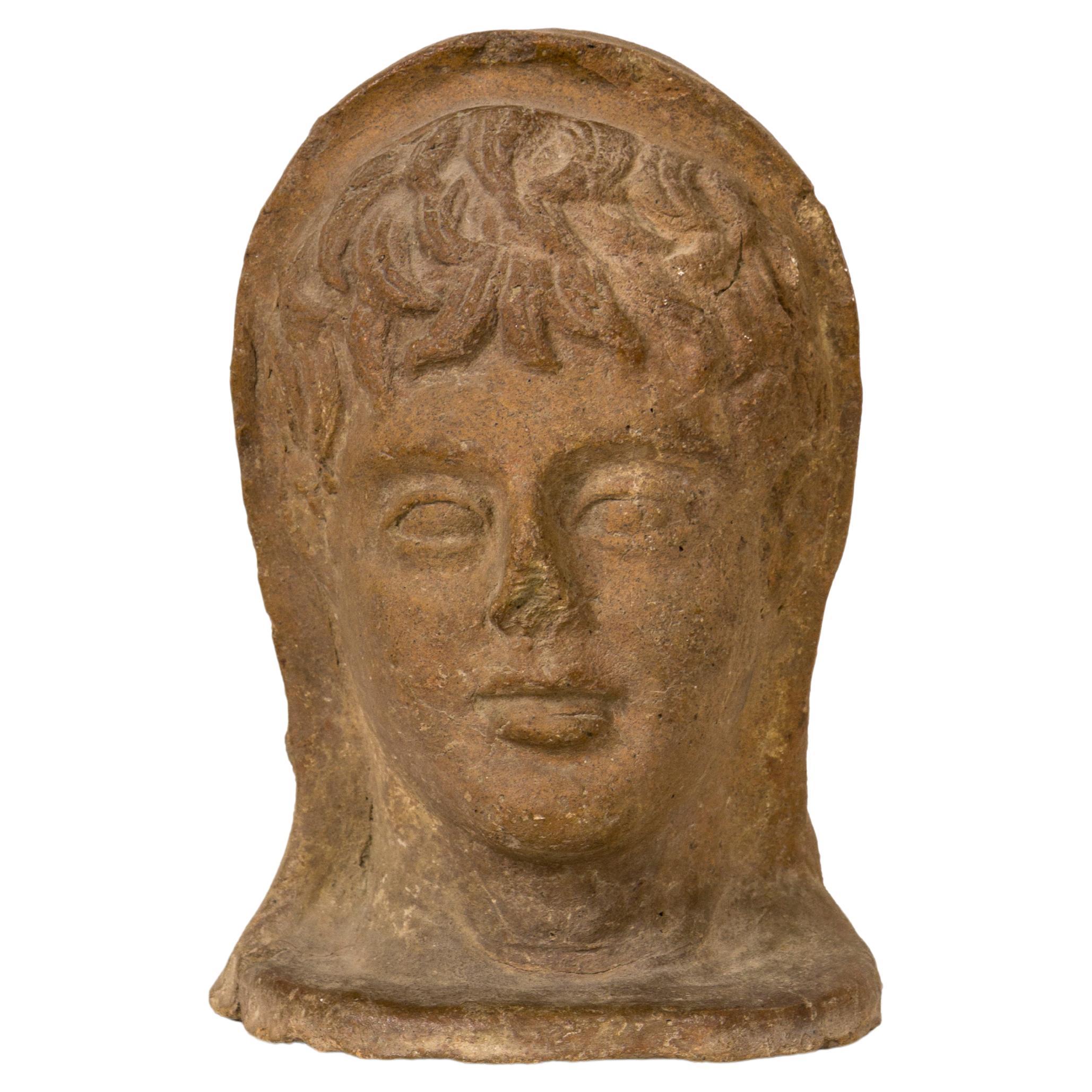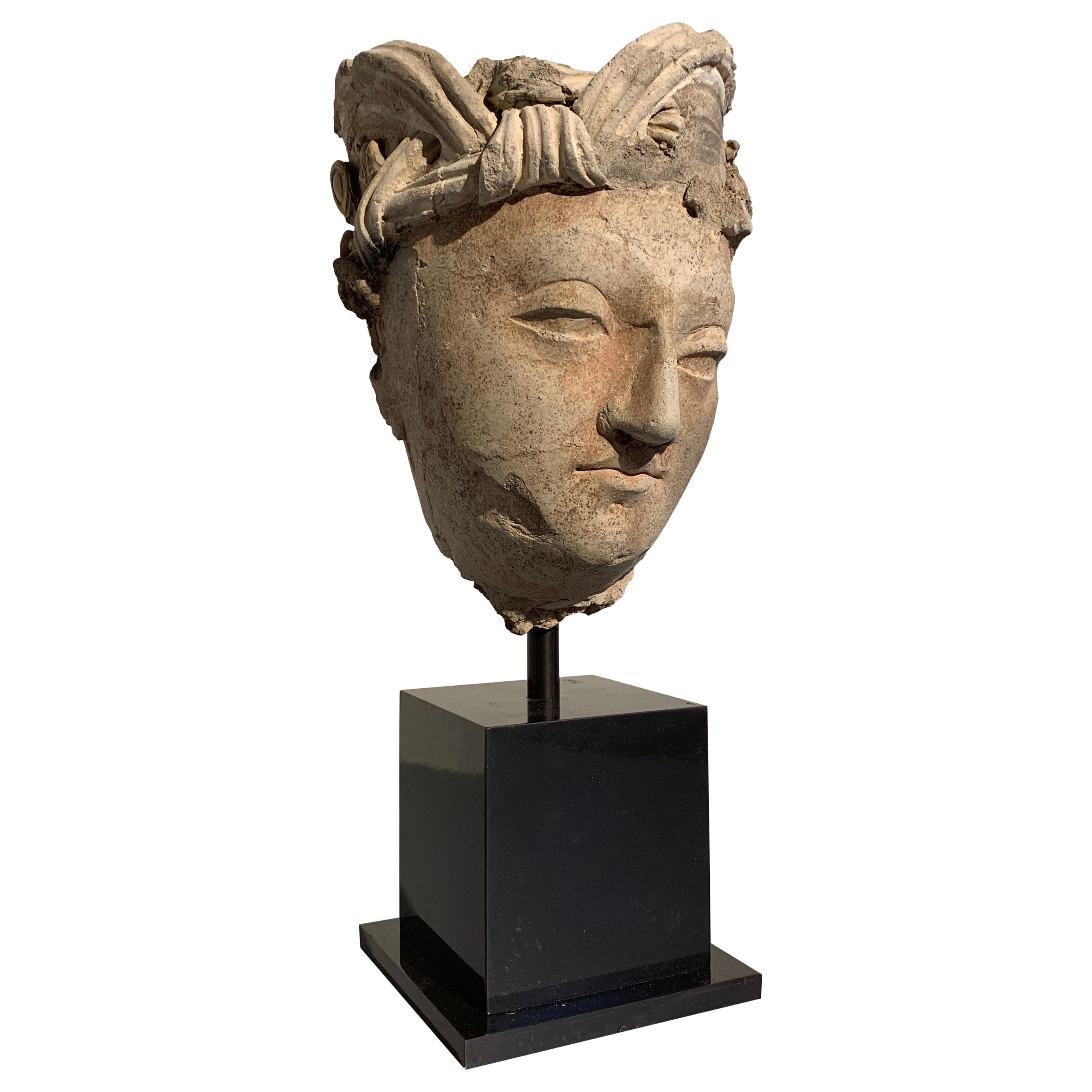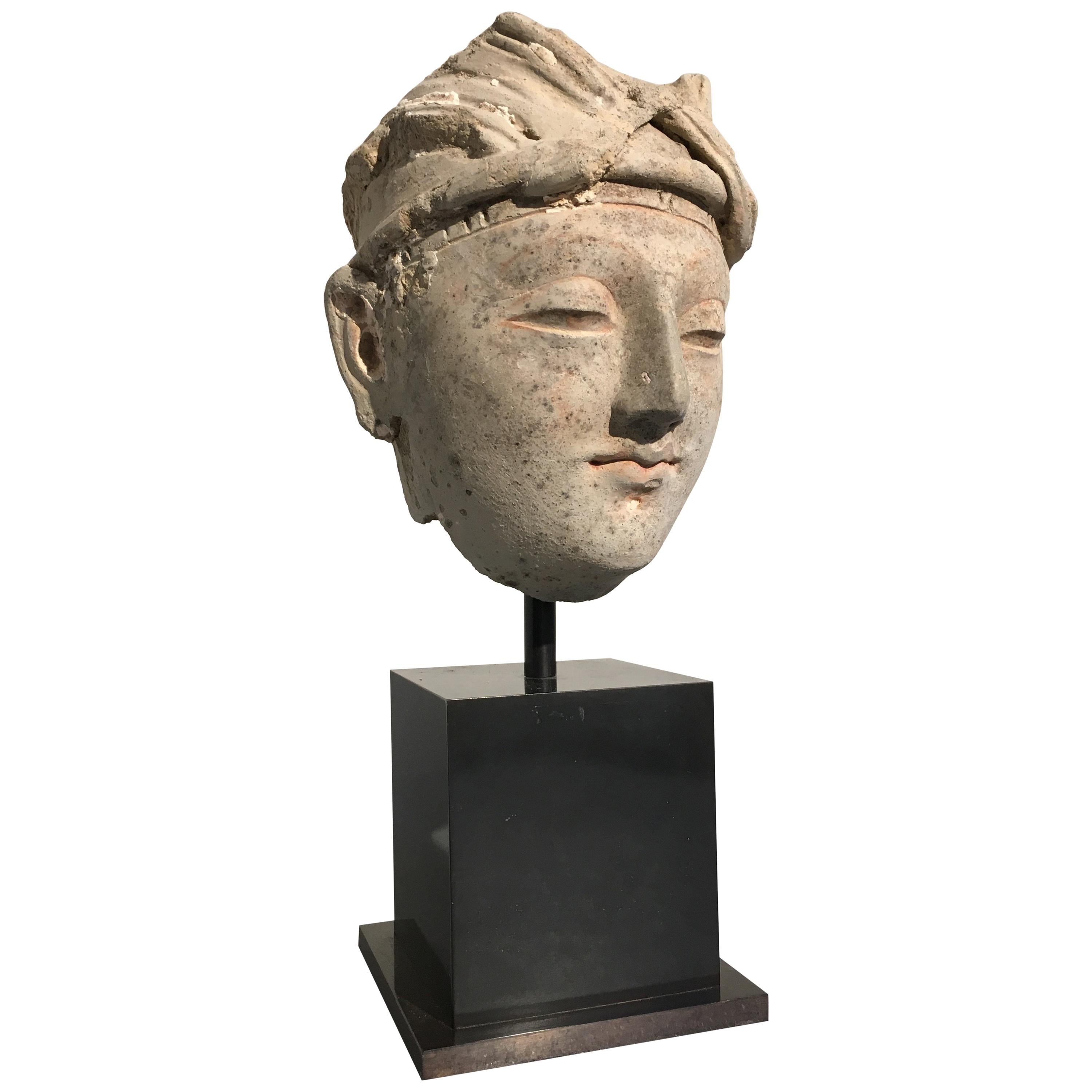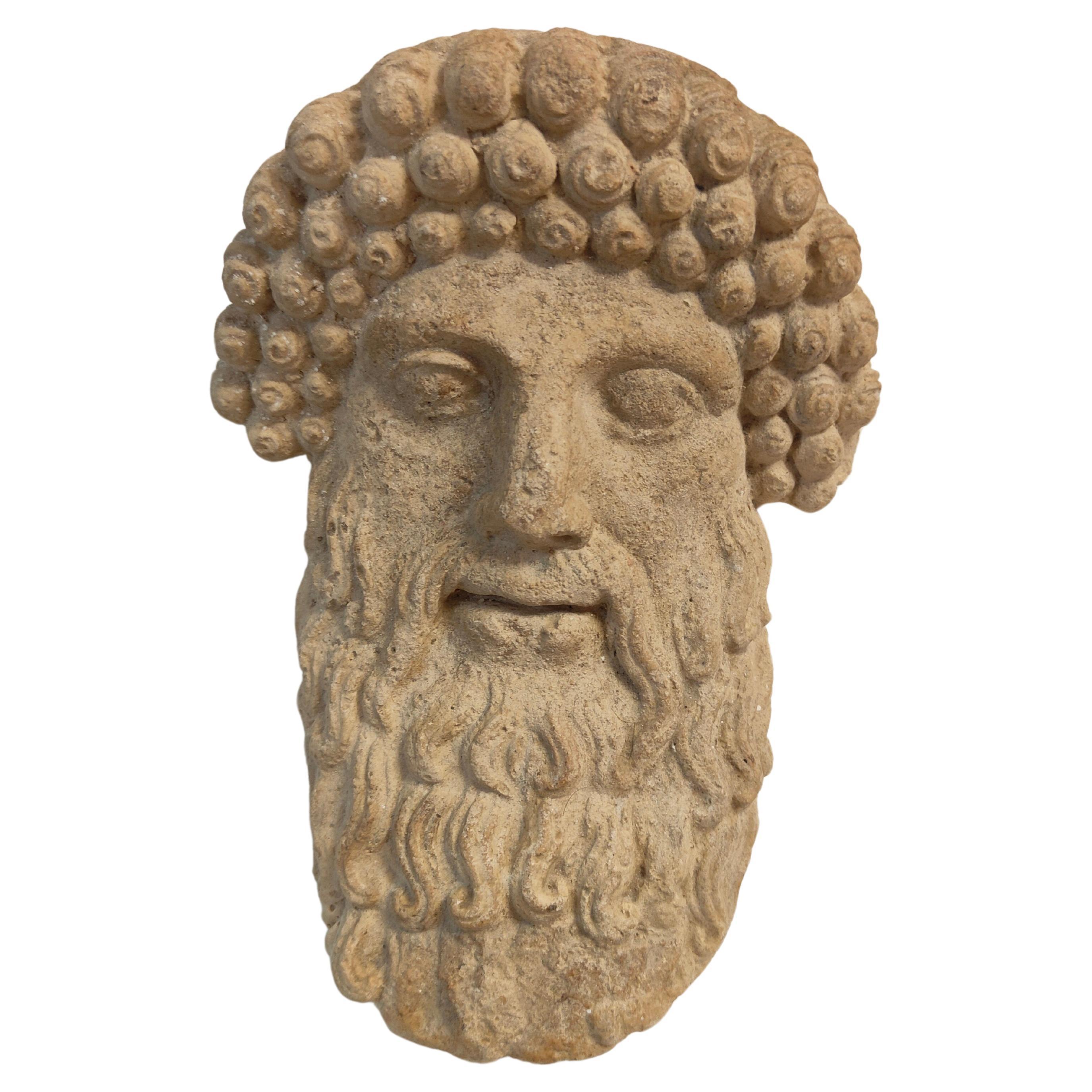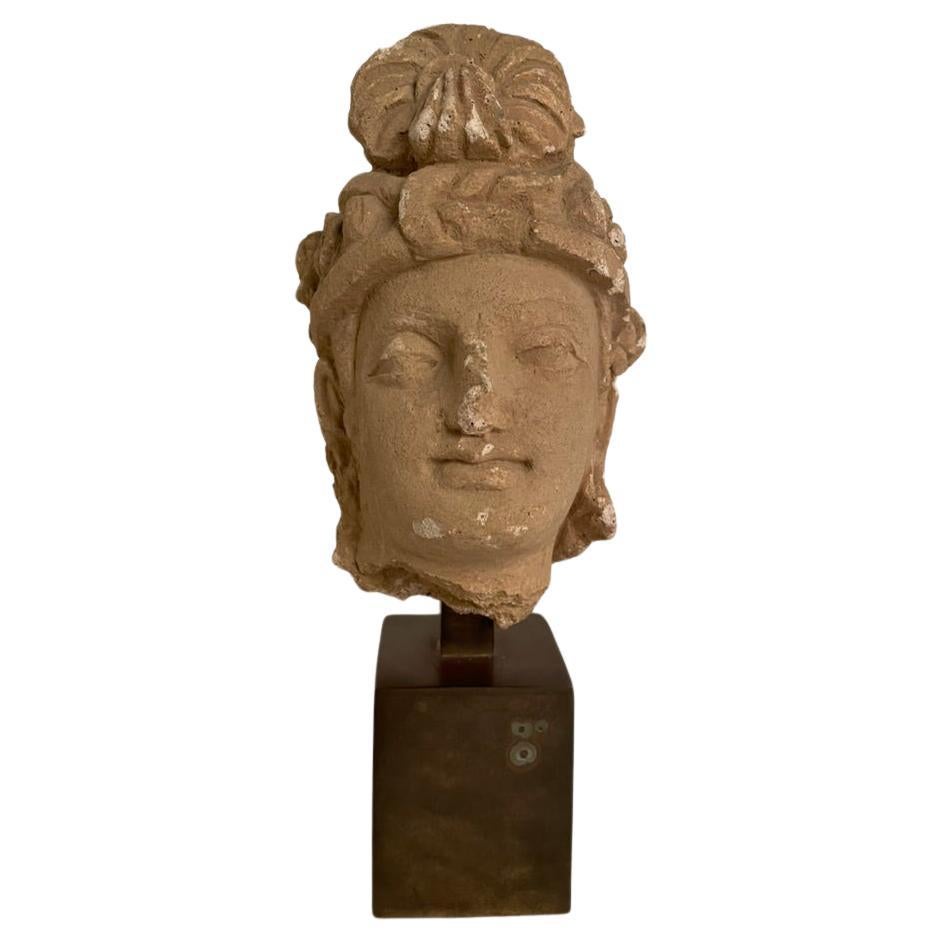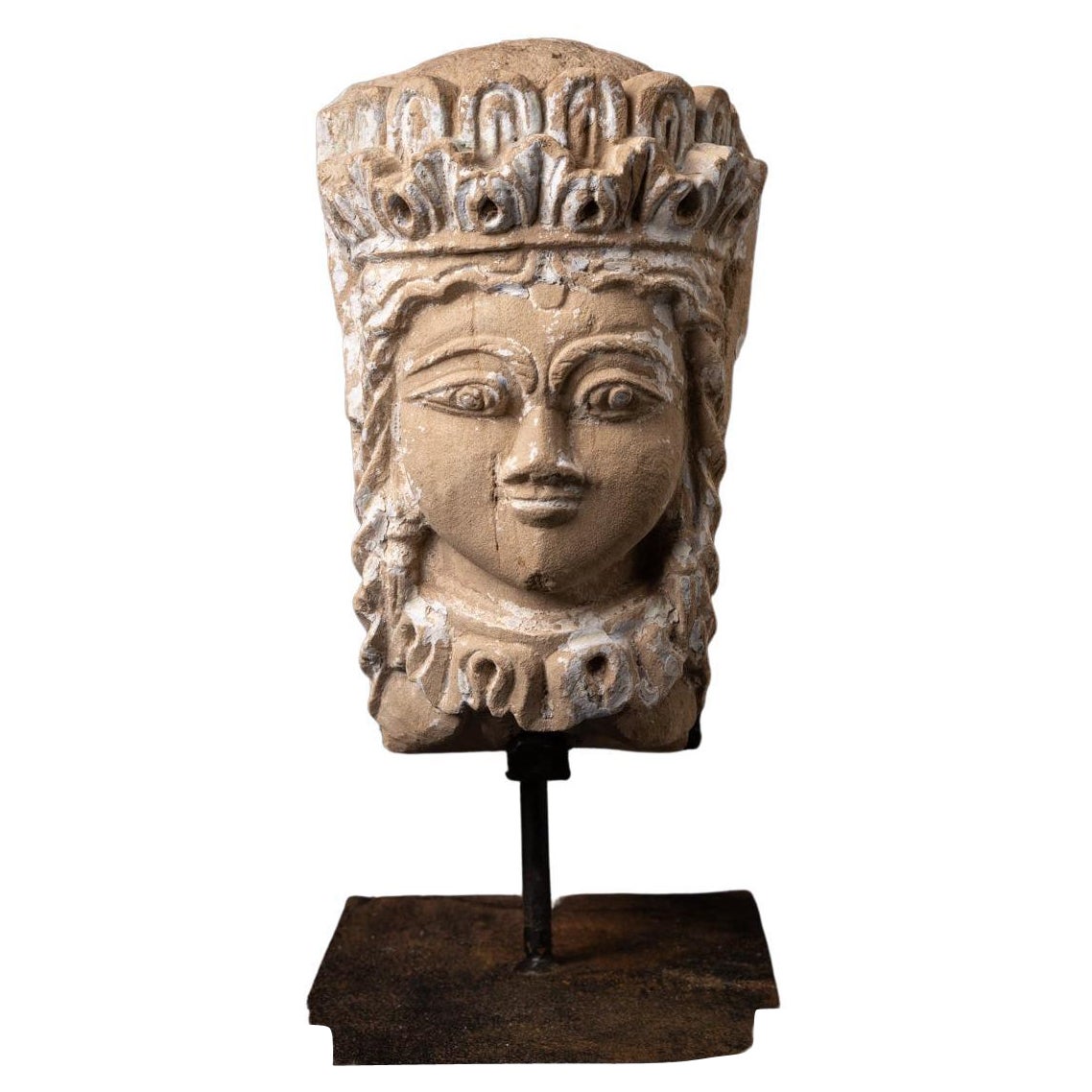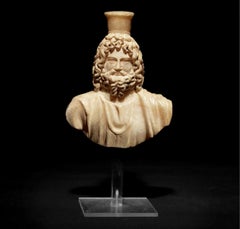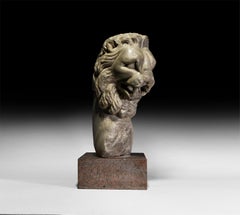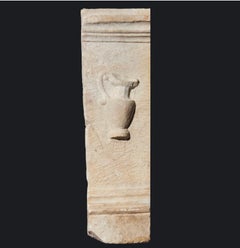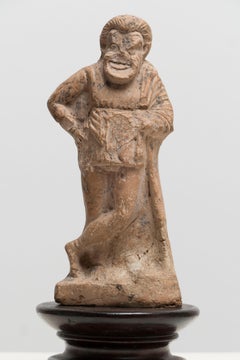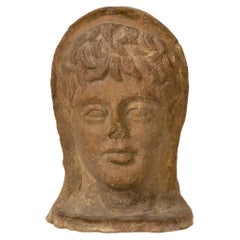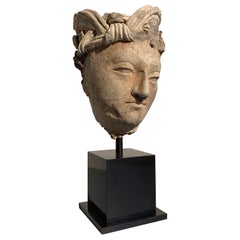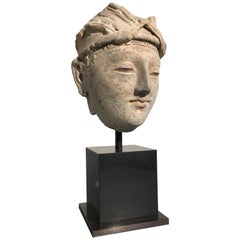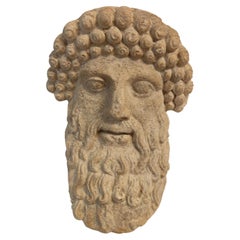Items Similar to ANCIENT CYPRIOT LIMESTONE HEAD OF A VOTARY, ARCHAIC PERIOD LATE 6TH CENTURY
Want more images or videos?
Request additional images or videos from the seller
1 of 6
UnknownANCIENT CYPRIOT LIMESTONE HEAD OF A VOTARY, ARCHAIC PERIOD LATE 6TH CENTURYArchaic Period, Circa late 6th Century - Early 5th Century BC
Archaic Period, Circa late 6th Century - Early 5th Century BC
$18,965.48
£14,203.68
€16,000
CA$26,584.85
A$29,290.32
CHF 15,162.44
MX$352,663.01
NOK 191,993.19
SEK 180,365.46
DKK 121,849.38
About the Item
PROVENANCE
Louis de Clercq (1836-1901), Paris
Nicolas Koutoulakis (1910-1996), Paris and Geneva; thence by descent to the present owner
LITERATURE
A. de Ridder, Collection de Clercq, Catalogue Tome V: Les Antiquités Chypriotes, Paris, 1908, no. 71.
In Cyprus, idols in terracotta and stone begin to appear as offerings in sanctuaries or tombs from the Chalcolithic period, but the production flourished during the 7th century showing evident Syrian-Palestinian and Egyptian influences. These votive offerings were placed in shrines, which were arranged in rows along the walls around the altar. Depictions of female votaries appeared in Cypriot art in the sixth century B.C. There were several iconographic types, all related to ritual activities associated with the cult of a fertility deity.
Louis de Clercq is known for his photographs taken during an expedition of the French Ministry of Public Instruction, accompanying the archaeologist Alban Emmanuel-Guillaume Rey (1837-1916). Throughout his life de Clercq assembled an important collection of marbles, vases and ivories, published posthumously by de Ridder between 1906 and 1908. The majority of this collection was donated to the Musee du Louvre after his death.
- Creation Year:Archaic Period, Circa late 6th Century - Early 5th Century BC
- Dimensions:Height: 5.32 in (13.5 cm)Width: 3.94 in (10 cm)Depth: 3.15 in (8 cm)
- Medium:
- Period:
- Condition:
- Gallery Location:Milan, IT
- Reference Number:1stDibs: LU154428428112
About the Seller
5.0
Vetted Professional Seller
Every seller passes strict standards for authenticity and reliability
Established in 2020
1stDibs seller since 2021
8 sales on 1stDibs
- ShippingRetrieving quote...Shipping from: Milan, Italy
- Return Policy
Authenticity Guarantee
In the unlikely event there’s an issue with an item’s authenticity, contact us within 1 year for a full refund. DetailsMoney-Back Guarantee
If your item is not as described, is damaged in transit, or does not arrive, contact us within 7 days for a full refund. Details24-Hour Cancellation
You have a 24-hour grace period in which to reconsider your purchase, with no questions asked.Vetted Professional Sellers
Our world-class sellers must adhere to strict standards for service and quality, maintaining the integrity of our listings.Price-Match Guarantee
If you find that a seller listed the same item for a lower price elsewhere, we’ll match it.Trusted Global Delivery
Our best-in-class carrier network provides specialized shipping options worldwide, including custom delivery.More From This Seller
View AllANCIENT ROMAN ALABASTER BUST OF THE GOD SERAPIS, ROME CIRCA 1ST-2ND CENTURY A.D.
Located in Milan, IT
Wearing a chiton with a himation draped at the left shoulder, and a modius on the crown of his head, the god's characteristic luxuriant wavy hair falling in ri...
Category
15th Century and Earlier Figurative Sculptures
Materials
Alabaster
ANCIENT MONUMENTAL MARBLE LION FOUNTAIN HEAD ROMAN EMPIRE 1ST/2ND CENTURY AD
Located in Milan, IT
Large roman carved marble fountain head representing a lion
Rome, I-II Century AC
Bonham's London, 22 September 1998, lot 485; formerly in the pr...
Category
15th Century and Earlier Figurative Sculptures
Materials
Marble
ANCIENT ROMAN MARBLE ALTAR FRAGMENT, 1ST/2ND CENTURY A.D.
Located in Milan, IT
Roman Marble Altar fragment from the 1st/2nd Century A.D. with the typical element of Roman rituals.
Provenance: Nicolas Koutoulakis (1910-1996), Paris...
Category
15th Century and Earlier Figurative Sculptures
Materials
Marble
Ancient Greek Terracotta Comic Actor Figurine
Located in Milan, IT
TERRACOTTA FIGURINE OF A COMIC ACTOR , Greece, c. 350 B.C.
Labeled to the reverse, 'LAWRENCE COLL./LOT 426. SOTHEBY./APR. 1892. P. 816.';
Terracotta
height 15.2 cm
height 6 in
Prove...
Category
15th Century and Earlier Figurative Sculptures
Materials
Terracotta, ABS
Ancient Roman Marble Altar Fragment with Cupid, Roman Empire, 2nd/3rd Century AD
Located in Milan, IT
Roman marble altar fragment with cupid
Provenance: Nicolas Koutoulakis (1910-1996), Paris and Geneva
Category
15th Century and Earlier Figurative Sculptures
Materials
Marble
ANCIENT RARE BRONZE FIGURE OF DIONYSOS (BACCHUS) ROMAN EMPIRE 1ST CENTURY AD
Located in Milan, IT
This bronze sculpture is an exquisitely detailed representation of the god Dionysos, whose cult was one of the most popular in ancient times. Here, the god is nude, with a mantle that gently lies on his right leg. He is holding a bunch of grapes with his left hand, and a rhyton (drinking horn) with the right. The god is youthful and joyfully gazes forwards, with a crown of ivy leaves set upon his long flowing hair.
These features clearly resemble those of the life-size Roman marble sculpture of Dionysos exhibited at the British Museum, acc. no. 1861,0725.2 .
This statuette was probably part of a larger composition and used as a decorative element applied to a piece of furniture. Its finely wrought details, as well as the attractive olive-green patina led to its inclusion in the collection of the Fitchburg Art Museum for thirty years.
PROVENANCE
English Private Collection (Sotheby’s, London 17-18 July 1985, Lot 204)
Royal Athena...
Category
15th Century and Earlier Figurative Sculptures
Materials
Bronze
You May Also Like
Etruscan Sculpture Head, 4th Century B.C., Italy
Located in Girona, Spain
DESCRIPTION: Etruscan sculpture head made with terracotta, the art represents a young man from the 4th century. It's a very decorative piece and the stat...
Category
Antique 15th Century and Earlier Italian Classical Greek Busts
Materials
Terracotta
Gandharan Stucco Head of a Bodhisattva, Region of Hadda, 3rd-5th Century
Located in Austin, TX
A striking Gandharan molded stucco head of a male Bodhisattva, tentatively identified as Manjushri, ancient region of Gandhara, probably Hadda or surrounding area, 3rd-5th century.
The Bodhisattva is sculpted of stucco in an idealized manner as a youthful male, with soft and kind features, a benign expression on his face. He wears an elaborate pleated turban wrapped around his head, with two sweeping lobes at the front.
His turban secured on one side by a small image of a roaring lion. The lion may be read as a reference to Manjushri, the Bodhisattva of Wisdom, who is often depicted as riding or subduing a roaring lion, a metaphor for taming the wild thoughts of the mind.
Manjushri gazes outwards in a beatific manner from almond shaped eyes, a gentle smile on his lips. The eyes at different levels when looking at the sculpture head on, indicating the original placement of the head was meant to be viewed at an angle.
Remnants of pigments to the eyes, nose, mouth and ears.
Mounted on a custom black metal stand.
Hadda was an important center of Buddhist learning in the early history of Greco Buddhist Gandhara, and at one time may have housed a bone relic of the historical Buddha, Shakyamuni. The sculpture and architecture of Hadda followed Hellenistic artistic conventions faithfully, leading some scholars to believe the distinct Greco Buddhist style of Gandhara was first developed in Hadda before spreading to the rest of the region.
The kingdom of Gandhara was situated at a crossroads of trade and cultures. Being one of the last remnants of Alexander the Great's Empire, the inhabitants of the Greco-Bactrian Buddhist kingdom preserved Greek culture and heritage for centuries after the decline of the Greek Empire...
Category
Antique 15th Century and Earlier Afghan Hellenistic Sculptures and Carvings
Materials
Stucco
Gandharan Stucco Head of a Donor, 4th-5th Century
Located in Austin, TX
A sublime molded stucco head of a young male donor from the ancient region of Gandhara, 4th-5th century.
The youthful nobleman sculpted in an idealized...
Category
Antique 15th Century and Earlier Pakistani Hellenistic Sculptures and Ca...
Materials
Stucco
Decorative Terracotta Head of a Greek God
Located in Madrid, ES
Enhance your collection with this exquisite decorative terracotta head of a Greek god, dating back to the early 1900s. This piece captures the timeless beauty and grandeur of ancient...
Category
Antique Early 1900s Figurative Sculptures
Materials
Terracotta
Gandharan Stucco Head of a Bodhisattva, 3rd-5th Century
Located in Stamford, CT
Stucco head of a Bodhisattva, Gandhara, 3rd - 5th century AD. Mounted on a custom made brass base.
12 inches high ( head alone 8.2 in ) 5.5 wide 5 deep
Provanance: Ex Sotheby's, old...
Category
Antique 15th Century and Earlier Sculptures and Carvings
Materials
Stucco
17th century Antique sandstone head from India from a Hindu Temple
Located in DEVENTER, NL
The antique sandstone head from India is a remarkable and historically significant artifact with deep cultural and artistic roots. Crafted from sandstone, this head stands at 42 cm i...
Category
Antique 17th Century Indian Sculptures and Carvings
Materials
Sandstone
